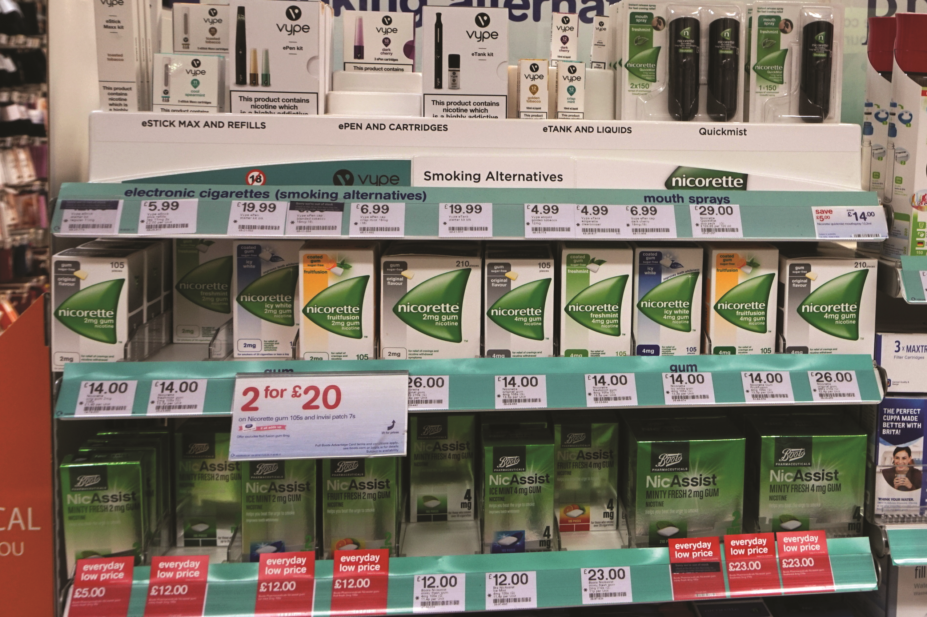
Shutterstock.com
Using combination nicotine replacement therapy (NRT), such as a patch plus a gum or lozenge, can increase the chances of successfully stopping smoking by 15% to 36%, compared to using single-form NRT, results of a Cochrane review have revealed.
The researchers searched the Cochrane Tobacco Addiction Group trials register and trial registries for papers mentioning NRT in the title, abstract or keywords. Trials that did not assess smoking cessation as an outcome and had a follow-up of less than six months were excluded.
A total of 63 trials were identified comprising 41,509 participants, most of whom were from the community or from healthcare clinics and smoked at least 15 cigarettes per day.
From their analysis, the researchers found high-certainty evidence that combination NRT resulted in higher long-term quit rates than single forms.
They found moderate-certainty evidence that 42mg and 44mg patches were as effective as 21mg and 22mg patches, but that people who used 21mg 24-hour patches were more likely to quit than those using 14mg patches. Similarly, those using 25mg 16-hour patches were more likely to quit than those using 15mg patches.
In the studies comparing different strengths of nicotine gum, it was found that a quit attempt was more likely to be successful using a higher dose (4mg) gum compared to the lower dose (2mg) gum, although further analysis suggested that only those smokers who were highly dependent were likely to benefit.
Using a fast-acting form of NRT, such as gum, nasal spray or lozenges, resulted in similar quit rates to nicotine patches.
They also found moderate-certainty evidence that using an NRT prior to quit day, or ‘pre-loading’, had a favourable effect compared to using NRT from quit day onwards, but said that more evidence was needed to strengthen this conclusion.
Lead author Nicola Lindson, from the Nuffield Department of Primary Care Health Sciences at the University of Oxford, said: “NRT is easy to access over the counter for people who would like to quit smoking, but many people don’t use it to best effect, so their chances of giving up smoking are reduced.”
“This high-quality evidence clearly signposts that the most effective way to use NRT is to use a combination of two products at once, a patch and a fast-acting form such as gum, nasal spray or lozenge. Quitting this way increases the chances of you stopping smoking altogether. Some people are concerned about using two forms at the same time, but the evidence does not indicate an increased risk of harms.”
“While this advice is included in the most recent clinical guidelines in the UK and United States, incorporating these findings into training and prescribing guidelines for health professionals, and advice for individuals looking to purchase NRT will likely help more people to give up smoking.”
You may also be interested in

Smoking cessation medicine cytisine to be available in January 2024, distributor confirms

Scottish government considers nicotine addiction treatment for children aged under 12 years
